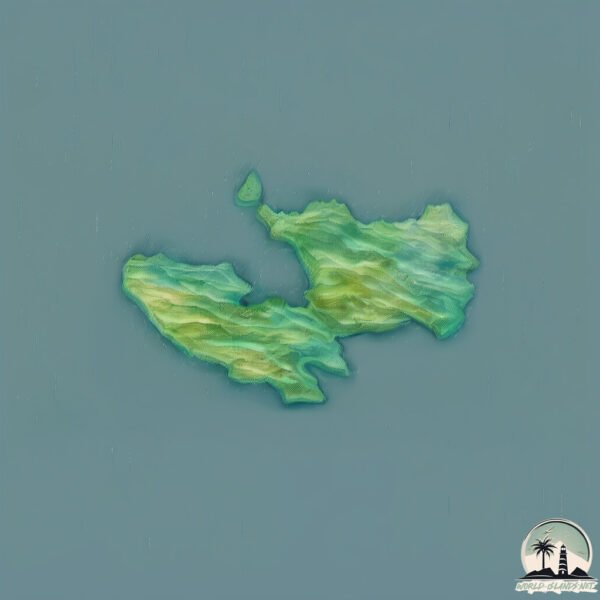Great Western Torres

Welcome to Great Western Torres, a Tropical island in the Andaman or Burma Sea, part of the majestic Indian Ocean. This guide offers a comprehensive overview of what makes Great Western Torres unique – from its geography and climate to its population, infrastructure, and beyond. Dive into the details:
- Geography and Size: Explore the island’s size and location.
- Climate and Weather: Weather patterns and temperature.
- Topography and Nature: Uncover the natural wonders of the island.
- Infrastructure and Travelling: Insights on reaching, staying, and making the most of your visit.
- News and Headlines: Latest News.
Geography and size of Great Western Torres
Size: 12.8 km²
Coastline: 24 km
Ocean: Indian Ocean
Sea: Andaman or Burma Sea
Continent: Asia
Great Western Torres is a Medium Island spanning 13 km² with a coastline of 24 km.
Archipel: Mergui Archipelago – Located in the Andaman Sea off the coast of Myanmar, known for their pristine beaches, diverse marine life, and Moken sea nomads.
Tectonic Plate: Sunda – Extends across Southeast Asia, encompassing parts of the Sunda Shelf, known for its interaction with the Australian Plate, contributing to volcanic activity in Indonesia.
The geographic heart of the island is pinpointed at these coordinates:
Latitude: 11.79318786 / Longitude: 97.4823249
Climate and weather of Great Western Torres
Climate Zone: Tropical
Climate Details: Tropical Monsoon Climate
Temperature: Hot
Climate Characteristics: Characterized by heavy rainfall, high humidity, and uniformly high temperatures, but with a distinct short dry season. It features a seasonal reversal of prevailing wind directions.
Topography and nature of Great Western Torres
Timezone: UTC+06:30
Timezone places: Asia/Rangoon
Max. Elevation: 338 m
Mean Elevation: 109 m
Vegetation: Evergreen Broadleaf Forest
Tree Coverage: 90%
The mean elevation is 109 m. The highest elevation on the island reaches approximately 338 meters above sea level. The island is characterized by Hills: Gently sloping landforms with rounded tops, having a maximum elevation between 200 and 500 meters. Hills contribute to a varied landscape on islands.
Dominating Vegetation: Evergreen Broadleaf Forest
Characterized by dense, lush canopies of broadleaf trees that retain their leaves year-round. These forests are typically found in tropical and subtropical regions and are known for their high biodiversity. Great Western Torres has a tree cover of 90 %.
Vegetation: 7 vegetation zones – Very Highly Diverse Island
Islands in this range are ecological powerhouses, showcasing a wide array of vegetation zones. Each zone, from lush rainforests to arid scrublands, coastal mangroves to mountainous regions, contributes to a complex and interdependent ecosystem. These islands are often hotspots of biodiversity, supporting numerous species and intricate ecological processes.
Infrastructure and Travelling to Great Western Torres
Does the island have a public airport? no.
There is no public and scheduled airport on Great Western Torres. The nearest airport is Myeik Airport, located 141 km away.
Does the island have a major port? no.
There are no major ports on Great Western Torres. The closest major port is MERGUI, approximately 138 km away.
The mean population of Great Western Torres is 42 per km². Great Western Torres is Gently Populated. The island belongs to Myanmar.
Continuing your journey, Kunthi Kyun is the next notable island, situated merely km away.
Myanmar is classified as Least developed region: Countries that exhibit the lowest indicators of socioeconomic development, with the lowest Human Development Index ratings. The level of income is Low income.
News – Latest Updates and Headlines from Great Western Torres
Stay informed with the most recent news and important headlines from Great Western Torres. Here’s a roundup of the latest developments.
- Figure 3. Inner fringe forest in poor condition, Sassie Island. - ResearchGateon 28 January 2025
Figure 3. Inner fringe forest in poor condition, Sassie Island. ResearchGate
- Eddie Koiki Mabo - Britannicaon 3 January 2025
Eddie Koiki Mabo Britannica
- Why Booby Island caves of the western Torres Strait host Queensland's first post office - ABC Newson 17 November 2024
Why Booby Island caves of the western Torres Strait host Queensland's first post office ABC News
- SBS to lean more into documentaries in 2025 with ‘The Idea of Australia’, ‘2.6 Seconds’ - Inside Filmon 30 October 2024
SBS to lean more into documentaries in 2025 with ‘The Idea of Australia’, ‘2.6 Seconds’ Inside Film
- SBS celebrates 50 years with an entertaining line-up of bold new content - SBSon 30 October 2024
SBS celebrates 50 years with an entertaining line-up of bold new content SBS
- Figure 1: Islands to the west and southwest of Mua Island, western... - ResearchGateon 29 October 2024
Figure 1: Islands to the west and southwest of Mua Island, western... ResearchGate
- The sailing trip of a lifetime where the Australian Outback meets the sea - Yachting Worldon 2 October 2024
The sailing trip of a lifetime where the Australian Outback meets the sea Yachting World
- "A great day" - Ngarda-Ngarli celebrate return of West Intercourse Island - National Indigenous Timeson 12 August 2024
"A great day" - Ngarda-Ngarli celebrate return of West Intercourse Island National Indigenous Times
- 40+ Aboriginal and Torres Strait Islander research leaders - Cosmoson 9 July 2024
40+ Aboriginal and Torres Strait Islander research leaders Cosmos
- 25 First Nations TV shows and films you really need to see - Esquire Australiaon 9 July 2024
25 First Nations TV shows and films you really need to see Esquire Australia
Please note: The data used here has been primarily extracted from satellite readings. Deviations from exact values may occur, particularly regarding the height of elevations and population density. Land area and coastline measurements refer to average values at mean high tide.
